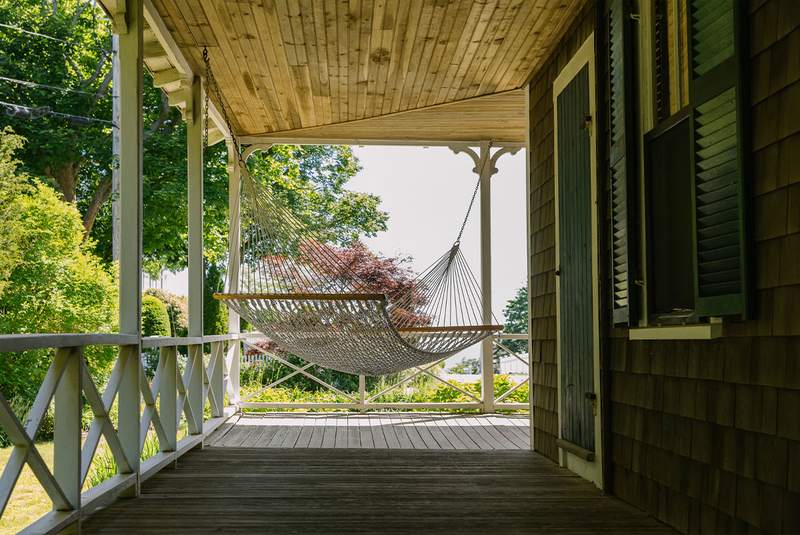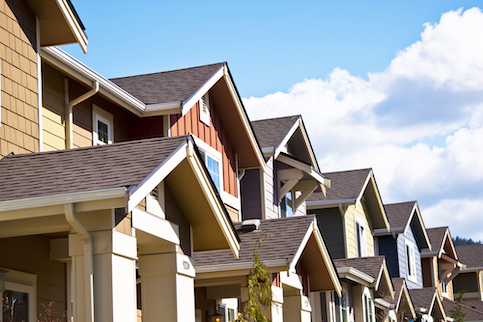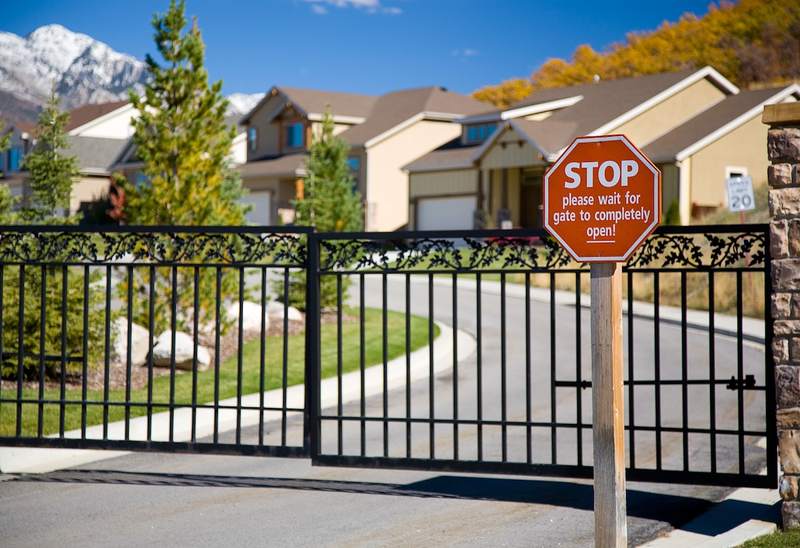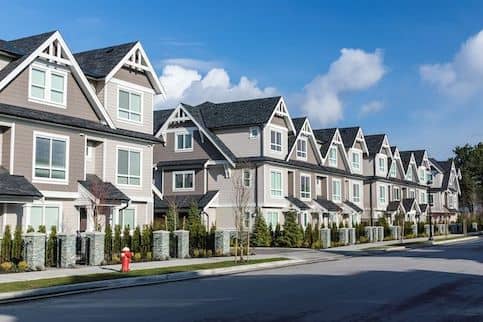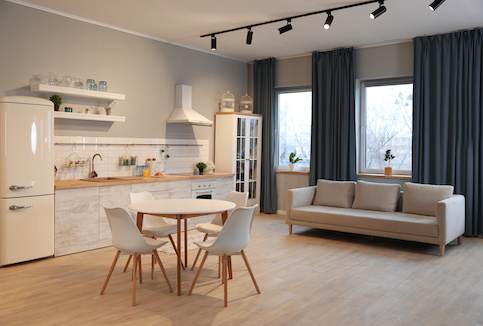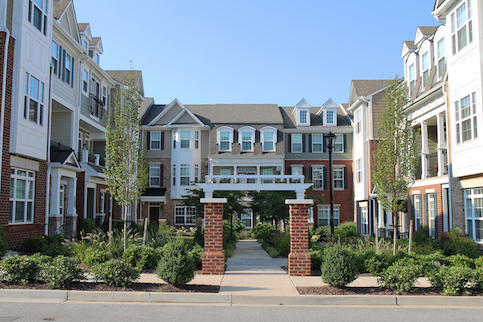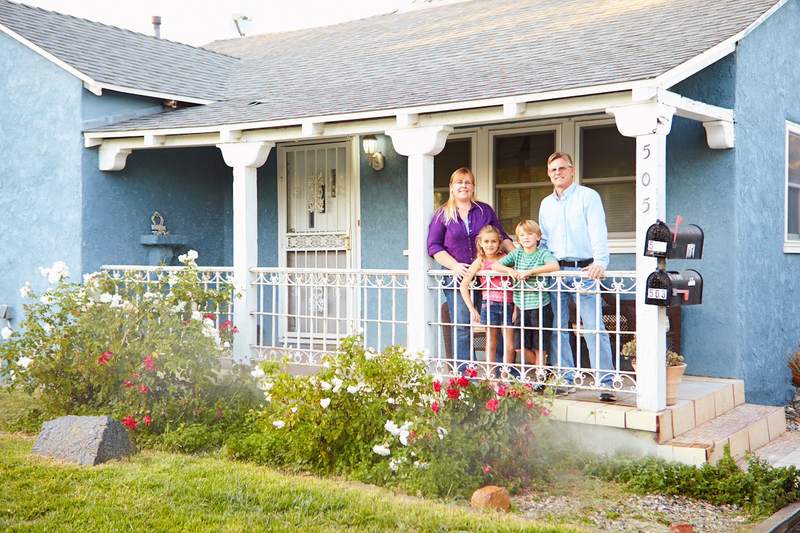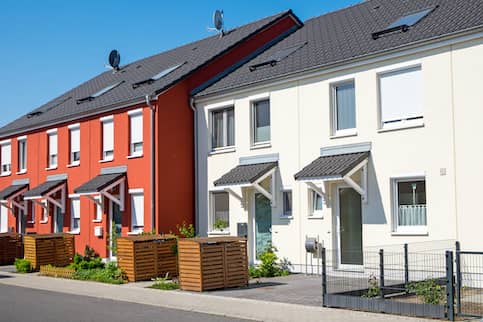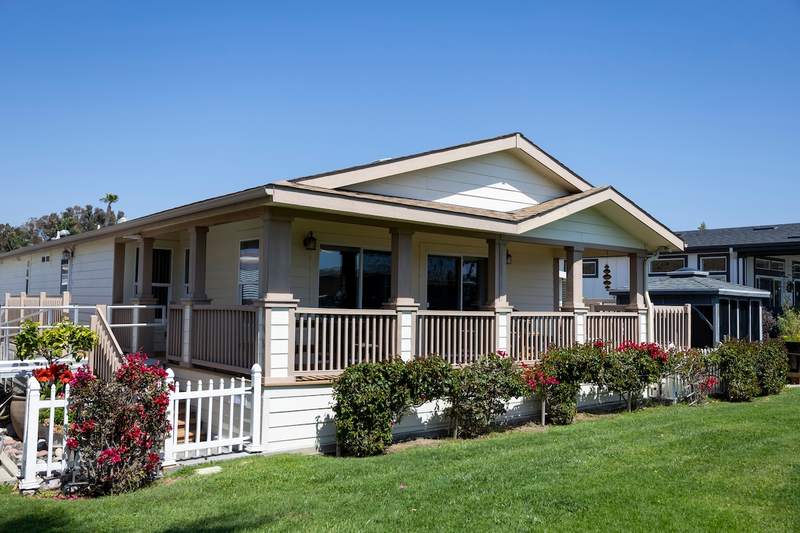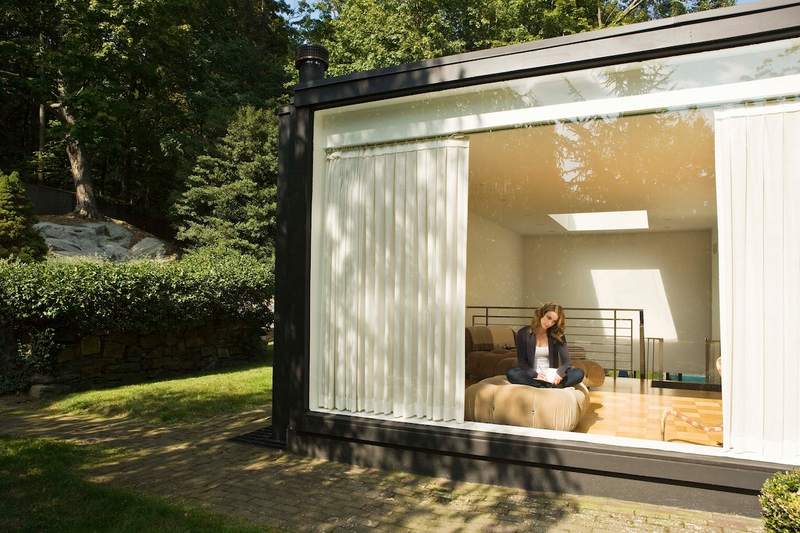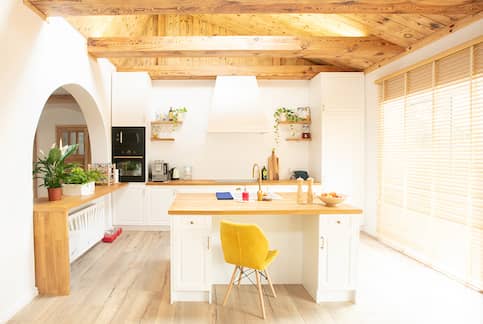While the terms “mobile home” and “manufactured home” are often used interchangeably, there’s a subtle yet crucial distinction between the two. Mobile homes denote those built before 1976, while manufactured homes are those constructed after that time, when pivotal legislation was passed to enhance mobile home quality standards. Purchasing a mobile or manufactured home means securing financing, finding a suitable location and overseeing installation. But understanding how to buy a mobile home or manufactured home could be your ticket to finding affordable housing tailored to your needs and preferences.
What Is A Mobile Home?
A mobile home is a manufactured home built before 1976, which marks when federal legislation improved the quality standards of prefabricated homes. As a result, mobile homes came from an era when factories produced manufactured homes with inconsistent quality and durability.
What’s Your Goal?
Buy A Home
Discover mortgage options that fit your unique financial needs.

Refinance
Refinance your mortgage to have more money for what matters.
Tap Into Equity
Use your home’s equity and unlock cash to achieve your goals.
What Is A Manufactured Home?
A manufactured home is a prefabricated home built after 1976, meaning it has higher quality standards than those in previous years. So, mobile homes built after 1976 were renamed “manufactured homes” to indicate the upgrade in quality standards.
For this reason, a mobile home and a manufactured home aren’t completely synonymous. The laws from the Department of Housing and Urban Development caused the newer mobile homes to be labeled “manufactured home” to distinguish the codes under which they were manufactured.
What’s The Difference Between Manufactured vs. Modular Homes?
While manufactured and modular homes are both factory-built, they differ in the following ways: first, manufactured homes come as a single unit, while modular homes usually come to the lot in multiple pieces.
Additionally, manufactured homes can sit on a metal frame and anchor to the ground with tie-downs. Conversely, modular homes usually rest on a crawlspace or basement.
Lastly, mobile homes have kept their signature rectangular look. On the other hand, modular homes can often be indistinguishable from conventionally built homes once their on-site construction is complete.
Ready To Become A Homeowner?
Get matched with a lender that can help you find the right mortgage.
How Much Does A Manufactured Home Typically Cost?
The latest data from the United States Census Bureau shows that the average sale price of a manufactured home was $127,300 in 2022. Costs vary by region, manufacturer and the choice between a single- or double-wide home. The average cost of a single-wide home was $86,400, while a double costs $158,600, on average.
These costs are substantially lower than traditional homes. According to U.S. Census data, the average sales price of a new home in 2022 was $540,000. As a result, manufactured homes are a more affordable option than many other types of houses.
Additional Manufactured Home Expenses
While it can be less expensive, buying a manufactured home does involve expenses beyond the purchase price. These fees are beyond the scope of a mortgage, meaning you’ll pay for these fees in addition to your home loan.
- Cost of the land the manufactured home will sit on. You’ll need to rent or own the lot where you place the home. Renting is usually cheaper and can cost between $300 and $1,000 monthly.
- Delivery fees. Manufacturing companies charge an average of $700 to $3,500 to transport the structure from the factory to your lot.
- Manufactured home installation fees. Homeowners using vacant land also pay for lot setup, which includes tree removal, soil testing, land grading and pouring a foundation. These services can cost from $7,000 to $47,000, so homeowners often prefer lot rentals instead.
- Cost of utility hookups. Hooking up to water, gas, electricity, etc., typically ranges from $1,000 to $9,000.
- Homeowners insurance. This is an ongoing policy to protect you from property damage, theft and injury. It may cost between $300 and $1,000 annually.
- Property taxes are another annual expenses. These costs vary by region, averaging between $5,000 and $15,000 every year.
Take The First Step To Buying A Home
Find a lender that will work with your unique financial situation.
Types Of Loans For Mobile Or Manufactured Homes
Several types of mortgages for manufactured homes are available for homeowners. Here’s a breakdown of each type by cost and requirements.
Loan Types For Manufactured Or Mobile Homes
| Mortgage Type | Minimum Down Payment | Maximum Loan Limit | Minimum Credit Score | Maximum Debt-To-Income Ratio | Additional Requirements |
|---|---|---|---|---|---|
| Conventional Loan | 3% | $766,550 in most regions and $1,149,825 in high-cost areas. | 620 | 50% | The home must be attached to a permanent foundation and must be your primary residence. |
| FHA Loan (Title II) | 3.5% for credit scores of 580 or higher; 10% for scores of 500 to 579. | $498,257 to $1,149,825, depending on your area. | 500 | 57% with a credit score of 580. | Mortgage insurance premiums incur upfront and monthly costs. |
| VA Loan | 0% | Varies by lender. | Varies by lender. | Varies by lender. | Requires a VA funding fee at closing. |
| USDA Loan | 0% | Varies by region. | Varies by lender but is typically 640. | 41% | Must be in an eligible Rural Development area. |
| Chattel Loan | Varies by lender | Varies by lender but typically adheres to the conforming loan limit. | Varies by lender but is typically 580. | Varies by lender. | Shorter terms (15 to 23 years maximum), higher interest rates and lower fees than other loan types. |
| Personal Loan | 0% | $100,000 | Varies by lender; usually 720 and higher for large loans. | Varies by lender. | Higher interest rates than other types. |
Conventional Loans
A conventional loan is a traditional mortgage that borrowers get to purchase a home. They’re available at banks, credit unions and online lenders. They have more strict borrowing requirements than other loans but also provide more freedom and flexibility. Lenders give conventional loans according to the rules set by two government enterprises: Fannie Mae and Freddie Mac. Here are the conditions they require:
- Fannie Mae: A valid mobile home loan is for a structure with a size of at least 400 feet and a width of 12 feet or more. The home must meet the HUD manufacturing code, have a permanent chassis and sit on a permanent foundation. Loans require a minimum 3% down payment and must be for your primary residence. Borrowers can get terms up to 30 years and have a fixed or adjustable interest rate.
- Freddie Mac: Can finance a single-wide or multi-wide residence (not an investment property). Requirements for home structure, down payment and loan terms are similar to Fannie Mae.
FHA Loan
An FHA loan is a mortgage option from the Federal Housing Administration. It provides lower credit requirements, helping more borrowers qualify for a home loan. There are two subtypes of FHA loans for manufactured homes: Title I and Title II. Title I is typically for improvements for manufactured homes and maxes out at $25,090 for houses attached to a permanent foundation. Homes not on a permanent foundation are classified as personal property instead of real estate and have a loan limit of $7,500.
On the other hand, Title II requires the home to be permanently attached to a foundation. The foundation must pass a Permanent Foundations Guide for Manufactured Homes inspection for the borrower to qualify for the loan. The home must also have been built after June 15, 1976, and adhere to the laws passed by HUD at that time. Fortunately, these strict requirements result in generous loan limits (between $498,257 and $1,149,825, depending on your area) and better terms and rates for borrowers. Therefore, your FHA loan for a mobile home will likely be Title II.
VA Loan
A VA loan is a mortgage option for military service members, veterans and their eligible surviving spouses. These loans have no down payment requirements, making them more affordable than other types. VA loans also have minimum property requirements that any home (mobile homes included) must pass to ensure a basic level of safety, security and habitability.
Additionally, the VA doesn’t set conditions for loan size, credit score, or DTI, leaving these criteria up to individual lenders. So, VA members often qualify more easily for this loan type.
USDA Loan
A USDA loan is a mortgage through the U.S. Department of Agriculture for borrowers with lower incomes in designated rural areas. As a result, borrowers in specific regions can qualify if they make 115% or less of the median family income in their area. Additionally, you don’t need a down payment for this mortgage option.
Chattel Loan
If your manufactured home isn’t permanently attached to the foundation, it’s classified as a vehicle instead of residential property. While the other loans on this list are solely for real estate, a chattel loan can finance the purchase of personal property. These loans don’t adhere to the same regulations as home loans. As a result, they have higher interest rates and shorter terms than mortgages. However, they can also have less-expensive fees and more-flexible repayment options, depending on the lender.
Personal Loan
A personal loan is a way to get financing without providing collateral. However, personal loans max out at $100,000, and this amount is only available to borrowers with the best credit scores (usually 720 and above). Additionally, because you don’t use the home as collateral, personal loans have higher interest rates to offset risk.
Pros And Cons Of Buying A Mobile Or Manufactured Home
Buying a manufactured home comes with drawbacks and benefits that should be fully considered before taking action. Here’s what to know:
Pros
- Affordability: Manufactured homes typically cost less than traditional stick-built homes, making them a more affordable housing option.
- Customization: Many manufacturers offer a range of customization options, allowing buyers to personalize their homes according to their preferences.
- Factory Quality Control: Manufactured homes are built in a controlled factory environment, which can result in higher construction quality and fewer weather-related delays.
- Energy Efficiency: Modern manufactured homes follow HUD’s environmental impact codes, potentially leading to lower utility bills.
- Quicker Construction: Manufactured homes can be constructed much faster than traditional homes, reducing overall construction time.
Cons
- Resale Value: Manufactured homes don’t reliably appreciate like traditional real estate. As a result, your home could become a liability instead of an asset.
- Land Costs: Purchasing land for a manufactured home can be expensive, adding to the overall cost of homeownership. Likewise, renting a plot in a mobile home community can add hundreds of dollars per month to your housing costs.
- Financing Challenges: Securing financing for a manufactured home can be more difficult compared to traditional homes, as lenders may view them as higher risk.
- Zoning Restrictions: Some areas may have zoning restrictions or homeowner association rules that limit where to place your manufactured home.
How To Buy A Manufactured House: 7 Steps
Buying a manufactured home entails the typical requirements of becoming a homeowner plus managing the land for the home. Here’s how to buy a mobile home and sidestep difficulties:
1. Find A Location For Your Manufactured Home
Research potential locations where you can place your mobile home. This could include manufactured home communities, private land or rental lots.
Remember, buying land means you’ll likely take out a separate loan to do so. You’ll likely need a credit score of 720 or higher and zoning approval from your municipality for the land. You may also need to clear and level the ground to prepare it for mobile home placement.
2. Choose The Right Manufactured Home
Research various manufacturers and models to find a home that suits your needs, preferences, and budget. Visit manufactured home dealerships or browse online listings to view different floor plans, features and customization options. A real estate agent can also help you find pre-owned homes for sale.
3. Review Your Qualifying Factors
Your financial circumstances determine how much you can afford to spend on a manufactured home. So review your credit score, income, debt-to-income ratio and savings to ensure you can qualify for a mortgage and afford a down payment.
4. Secure Loan Financing
Explore financing options available for these types of homes, including conventional loans, FHA loans, VA loans, chattel loans or personal loans. Gather necessary documentation, such as proof of income, employment history and credit history, to apply for financing.
It’s advisable to prequalify for mortgages from multiple lenders to see what kind of offers you get. Then, compare loan offers to find the most favorable terms and interest rates.
5. Close On The Manufactured Home Loan
Once you’ve chosen a lender and secured financing, you’ll need to have an appraisal and an inspection of the home. After resolving any issues arising from these, you’ll complete the loan application process and sign the necessary paperwork to close. This also involves paying closing costs and a down payment.
6. Make Preparations For Your Home Installation
If you’re placing your mobile home on private land, preparing the site for installation is necessary. Specifically, it’s crucial to ensure utility hookups are available. Additionally, if you’re living in a mobile home community, you’ll need to coordinate with management to schedule installation. It’s also essential to purchase manufactured homeowner’s insurance.
7. Move In To Your New Manufactured Home
Once the site is prepared and the home is delivered, a professional installation crew will set up the mobile home according to manufacturer specifications. Inspect the home upon delivery to ensure it meets your expectations and is free from damage or defects. After the home is installed and utilities are connected, you can move in and begin enjoying your new mobile home.
FAQ
Here are answers to common questions about buying a mobile or manufactured home.
The Bottom Line
Buying a mobile or manufactured home involves navigating a unique set of considerations. Borrowers will decide where to put the home, secure a specific loan type based on financial circumstances, and prepare the land for installation. While these homes offer affordability, customization options, and faster construction timelines, they can also depreciate in value and suffer from zoning restrictions.
By carefully researching options and following the steps outlined above, prospective buyers can take some of the guesswork out of purchasing a mobile home that meets their needs and preferences.

Ashley Kilroy
Ashley Kilroy is an experienced financial writer who writes for solo entrepreneurs as well as for Fortune 500 companies. She is a finance graduate of the University of Cincinnati. When Ashley isn’t helping people understand their finances, you may find her cage-diving with great whites or on safari in South Africa.

